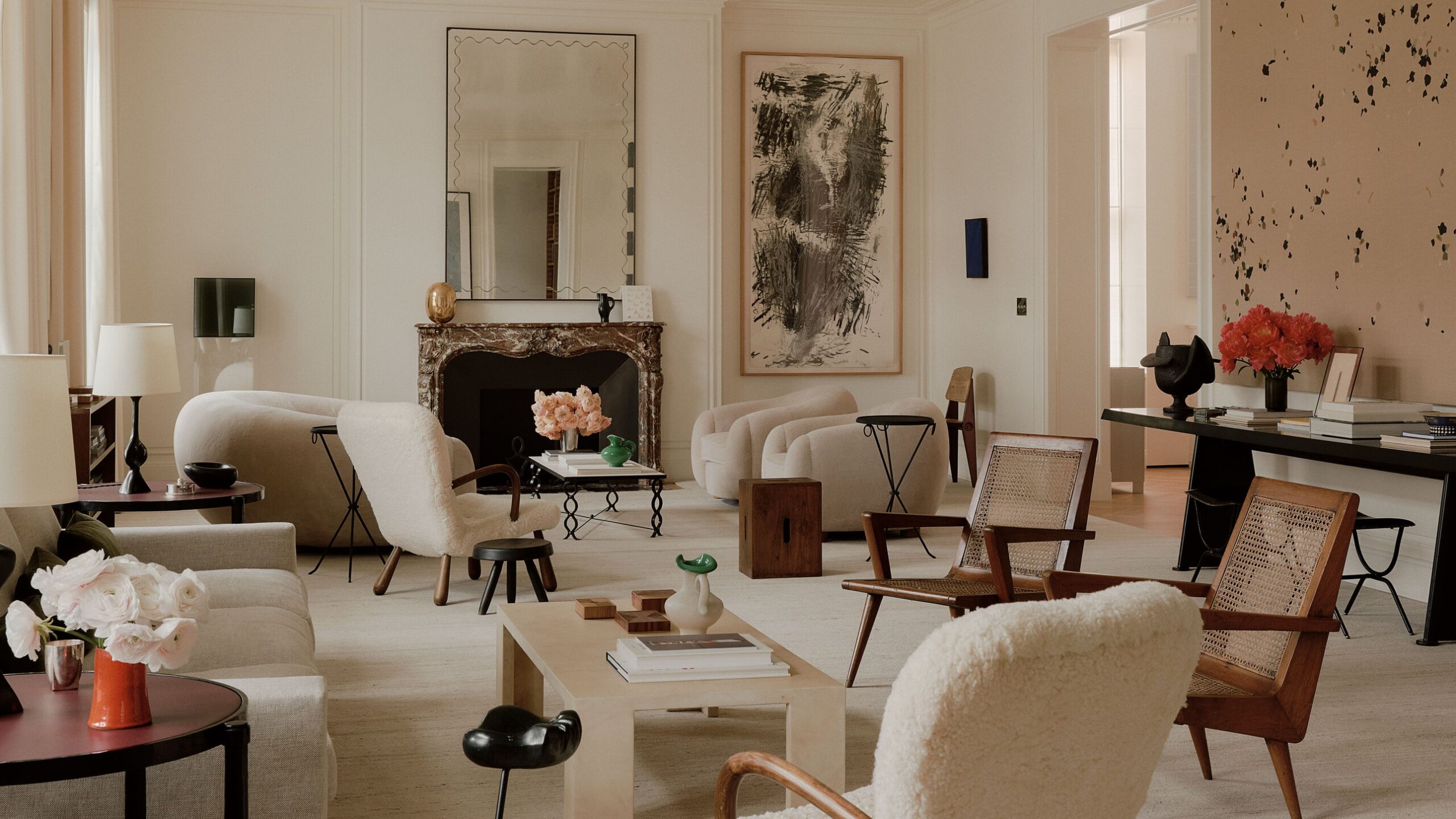Seeing the potential in the original apartment—a maze of smaller rooms with odd proportions—was no small feat. “It needed me,” Kapito confides of the property’s less desirable but alterable former features. “Nothing was right, but you can’t change the bones, and it had these amazing bones.” Among them: soaring 11-foot-three-inch ceilings, which McMahon managed to maintain throughout, oversized windows lining treetop exposures, and copious natural light.
Though Kapito delights in the abode’s structural transformation—which included combining three small public rooms into an expansive living room with a library at one end, as well as reconfiguring the kitchen and primary suite—it was appointing the spaces that most thrilled the designer. Her serene dwelling showcases specimens by such renowned designers as Jean Prouvé, François-Xavier Lalanne, and Jacques Adnet, as well as Georges Jouve, whose iconic Patte d’Ours ashtray (sitting atop its distinctive Mathieu Matégot–designed stand) Kapito sometimes fills with jelly beans for guests. Lining the custom-plaster walls is a host of complementary sculptural and graphic artworks.
Lauded for showcasing collected interiors on clean backdrops, Kapito added visual interest to neutral surfaces through bespoke details: raised paneling (in the manner of Jean-Michel Frank), custom hardware, and brawny Parisian-inspired door casings. Even the inclusion of delicate fluting, found at the base of glass-and-metal doors delineating the elevator vestibule from the foyer, came from a frieze Kapito had admired on a Manhattan building. Characteristic of her thoughtful aesthetic, the spaces reward those willing to take a closer look. After visiting “every historic home on the Upper East Side” for research, she says, imbuing the residence with authenticity was paramount.
Kapito, who loves to entertain at home, also recognizes the influence her milieu has on the work. Broadly considered an It girl of interior design—a not ill-founded characterization she demurely admits to finding flattering—the designer’s social circle keeps her engaged and inspired. “I function in a lot of different worlds. I do function in the fashion world. I do function in the art world. I also have a lot of friends who are very creative,” she says, gesturing to her Juju Vera necklace by pal Julia Ferentinos. “While every detail is carefully considered, none of it feels too precious or finicky,” notes Isabel Wilkinson Schor, another close friend of Kapito and the founder of clothing brand Attersee, of the home. “Just like Alyssa herself, the space is warm, disarming, and inviting.” This hyper-connected sphere will help guide Kapito’s latest passion project, a brick-and-mortar gallery opening near the apartment this year; it will feature a mix of fashion, art, and design largely inspired by, curated for, and, in some cases, created with her stylish confidants.
Musing on principal takeaways from the transformation of her own home, Kapito looks at her surroundings. “I want people who care to walk in and be like, ‘That’s a new idea. I haven’t seen that before. Where is that from?’ ” It is perhaps not surprising then that her signature is giving timeworn pieces another life in meticulously rendered environments. “I love that tension between the new and old—it feels fresher,” she says. “And you kind of see the stories.”
Alyssa Kapito’s Upper East Side apartment is featured in AD’s February issue. Never miss a story when you subscribe to AD.

